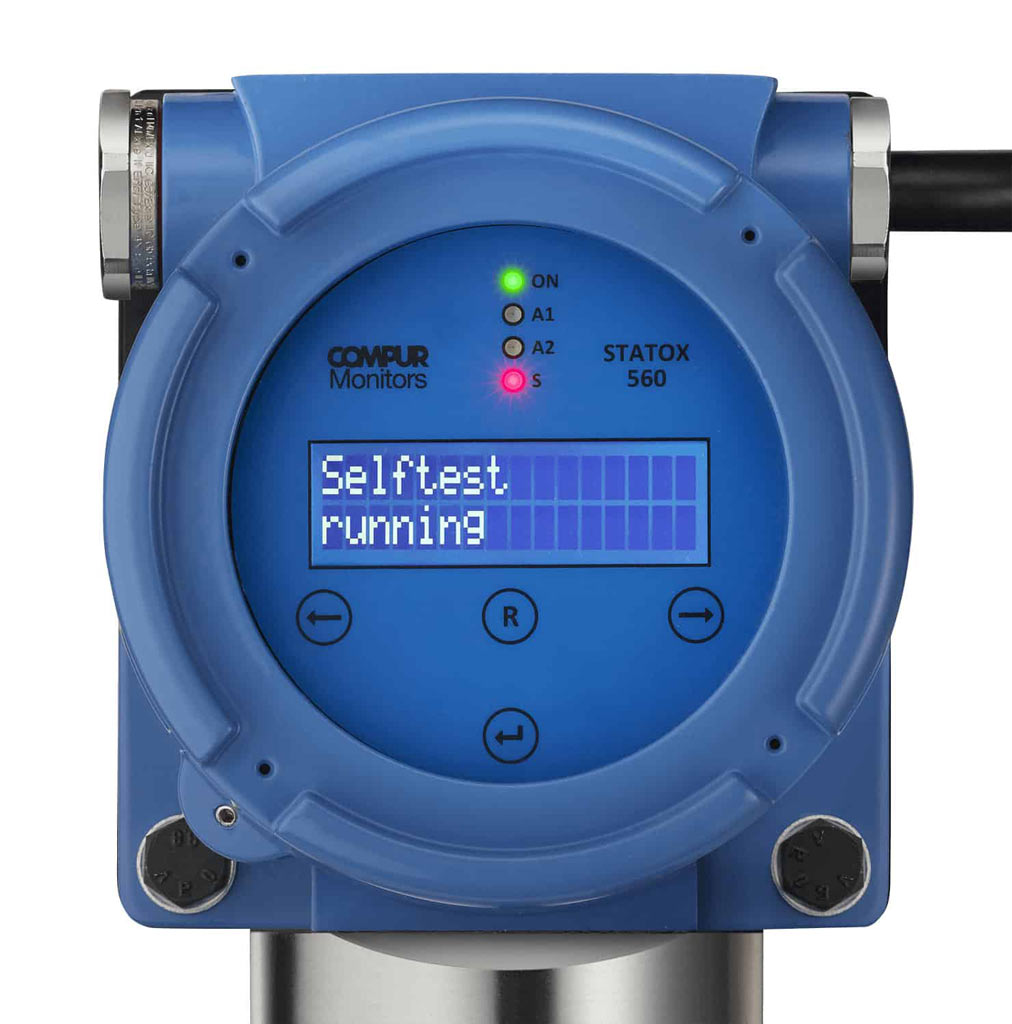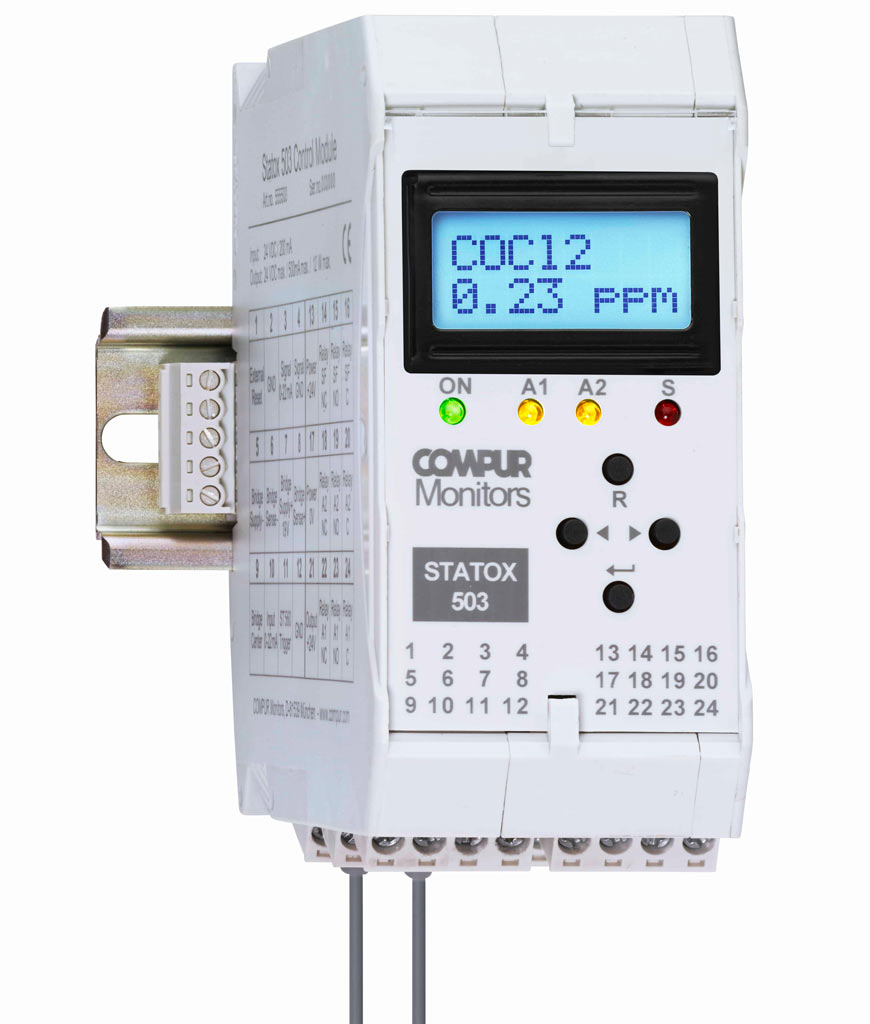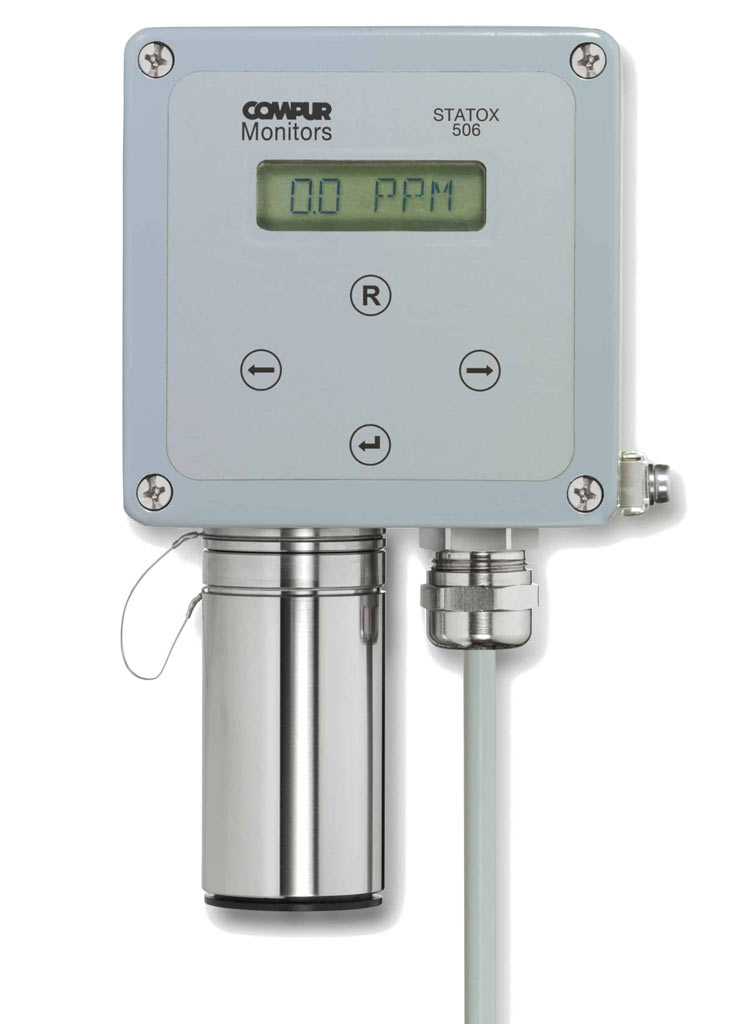Carbon monoxide guide
This carbon monoxide guide provides detailed information about the history, properties, use and risks of carbon monoxide, often referred to as carbonoxide in everyday use. In the following carbon monoxide guide, the term “carbon monoxide” therefore always refers to CO.
- A look at the history of carbon monoxide
- Chemical and physical properties of carbon monoxide
- Biological significance of carbon monoxide
- Occurrence of carbon monoxide
- Carbon monoxide in the atmosphere
- Carbon monoxide in buildings
- Extraterrestrial occurrence of carbon monoxide
- Formation and production of carbon monoxide
- Extraction from carbonaceous deposits
- Use of carbon monoxide
- Storage and safe handling
- Health risks caused by carbon monoxide
- First aid measures for carbon monoxide exposed persons
- Detection of carbon monoxide
A look at the history of carbon monoxide
The reducing effect of carbon monoxide during the smelting of metal ores was utilised as early as 1000 BC, when a special furnace design was developed for this process. However, it was not known how this this utilisation works at this time. It was not noticed until the end of the 13th century that a poisonous gas could be formed when burning wood. The first scientifically based experiments with carbon dioxide gas, a mixture of carbon dioxide and carbon monoxide were carried out at the beginning of the 17th century by Johan Baptista van Helmont. This was the beginning of the targeted research and utilisation of carbon monoxide.
Various experiments were carried out on the production of carbon monoxide and the toxic properties were evaluated using dogs. The process of coal gasification was developed as the demand for illuminating gases had steadily increased. This process produces a combustible gas that contains hydrogen, methane and carbon monoxide. This was the beginning of the professional use of an energy source containing carbon monoxide. The chemical industry’s demand for this synthesis gas containing carbon monoxide increased continuously. Various processes were developed to meet the demand via coal gasification, including the Winkler generator, the Lurgi pressurised gasifier and the Kopers-Totzek reactor.
Among the particularly unpleasant moments in the history of carbon monoxide are the frequent mining accidents caused by mine gas in the early days of coal mining. The atmosphere in mines contains air, methane, but also carbon dioxide and the very toxic carbon monoxide. It could trigger explosions as well as cause direct poisoning.
Chemical and physical properties of carbon monoxide
Carbonoxide, or carbon monoxide, is a chemical compound of carbon and oxygen. It belongs to the group of carbon oxides and has the molecular formula CO.
Carbon monoxide is a colourless, odourless and toxic gas and, at 1.14 kg/m3 or 28.01 g/mol, has a density almost as high as air. The ignition temperature is 605 °C. The solubility of carbon monoxide is 30 mg per litre of water at a temperature of 20 °C, i.e. it is virtually non soluble in water and therefore cannot be washed out of a gas stream. The lower explosion limit is 11.3 %. As a combustible gas, carbon monoxide burns together with oxygen with a blue flame and is oxidized to carbon dioxide.
The reactivity of carbon monoxide increases with rising heat or pressure. Highly toxic compounds are formed, especially in combination with chlorine, sulphur and fluorine.
Although carbon monoxide is formed via exothermic reactions, it is thermodynamically unstable. Even at room temperature, it disproportionates into carbon and carbon dioxide in a very slow and therefore barely measurable process. This metastability – stable with small changes, unstable with more massive effects – offers numerous advantages in a wide range of industrial applications.
The colourless and odourless gas is highly toxic to living organisms due to its significantly superior binding properties to hemoglobin compared to oxygen. Just 1.28% carbon monoxide in the breathing air we bcan be fatal, as the oxygen binding sites on hemoglobin and myoglobin are blocked by the carbon monoxide inhaled. This hinders the transport of oxygen in the blood and so leads to death by asphyxiation. All the risks of carbon monoxide can be found in one of the following chapters in the carbon monoxide guide.
Biological significance of carbon monoxide
Although carbon monoxide is highly toxic to the human organism, there is a carbon monoxide content of 0.7 to 1.1 % in venous blood. A small proportion of 0.5 % is endogenous, i.e. a product of metabolic processes in the body. Scientists suspect that carbon monoxide plays an important role as a messenger substance for the sense of smell.
As carbon monoxide has anti-inflammatory properties, it is used in small quantities in certain medical areas such as organ transplantation. After a lung transplant, for example, it promotes blood flow to the implanted organ. Kidneys intended for transplantation are stored in a solution containing small amounts of carbon monoxide in order to prevent processes that might be cell-damaging.
Occurrence of carbon monoxide
In the presence of carbon monoxide, a distinction is made between
- atmospheric occurrence,
- the occurrence in buildings and
- the extraterrestrial occurrence
are distinguished. Only a small part of the carbon monoxide present is of natural origin. The majority is man – made.
Carbon monoxide in the atmosphere
The earth’s atmosphere contains around 400 megatons of carbon monoxide. This corresponds to an average concentration of 90 ppbv (parts per billion by volume) or a proportion of 90 billionths of the total volume. However, these proportions are unevenly distributed between the northern and southern hemispheres of the earth. For example, the natural proportion in the northern hemisphere before industrialisation was 90 ppbv, which has increased to 140 ppbv today. In the southern hemisphere, the average concentration is still at the natural level of 50 ppbv.
The average atmospheric lifetime of carbon monoxide is approximately two months before it oxidises to carbon dioxide. However, there are significant differences in the average lifespan between the southern and northern hemispheres due to the different intensity of solar radiation. The life span range goes from one month in the southern hemisphere to one year in winter in the northern hemisphere.
40 % of carbon monoxide in the atmosphere is of natural origin. The remaining 60 % is man-made carbon monoxide produced by the incomplete combustion of fossil fuels or other biomass.
Carbon monoxide in buildings
The normal concentration of carbon monoxide in buildings is between 0.5 and 5 ppm, provided there is no smoking, and no gas burner nor a wood burner in operation. In the vicinity of gas burners, the CO concentration can increase to up to 15 ppm; tobacco smoke from ten cigarettes in an unventilated room increases the CO concentration to 22 ppm.
For this reason, a sufficient supply of fresh air must always be ensured in rooms in which room air-operated fireplaces or tiled ovens, as well as gas-fuelled boilers or instantaneous water heaters are in operation. In the case of tiled and wood-burning ovens, the chimney sweep must ensure that the chimney flue works properly in order to reliably prevent the backflow of carbon monoxide into the living space. For example, extractor bonnets with exhaust air operation are prohibited to be used when a fireplace is used at the same time.
Extraterrestrial occurrence of carbon monoxide
Carbon monoxide is not only found on Earth and in our atmosphere, but also in outer space, i.e. extraterrestrial space. For example, the Giotto space probe was able to detect carbon monoxide in the gas emissions of various comets. Based on these findings, scientists assume that carbon monoxide has played a significant role in the formation of our solar system.
Formation and production of carbon monoxide
Carbon monoxide is always produced when carbon-containing substances are oxidised incompletely. This is the case when too little oxygen is available during combustion or very high temperatures prevail during the combustion process. In this case, the Boudouard equilibrium comes into play, which describes the balance between carbon dioxide (CO2) and carbon monoxide (CO).
At temperatures above 600 °C, the proportion of carbon monoxide shifts massively in favour of carbon monoxide compared to the proportion of carbon dioxide. Based on this realisation, a wide variety of processes can be applied specifically for the extraction of carbon monoxide, but also for a wide variety of production processes such as the smelting of metals.
- 450 °C: 98 % CO2, 2 % CO
- 700 °C: 42 % CO2, 58 % CO
- 1000 °C: 1 % CO2, 99 % CO
In addition to the natural formation of carbon monoxide, for example in the form of forest fires, humans make a major contribution to the formation of carbon monoxide. This applies above all to all machines and vehicles that are fuelled by fossil fuels, but also to oil or gas-powered industrial furnaces in production. Not forgetting the numerous heating systems that run on heating oil or natural gas.
Extraction from carbonaceous deposits
Over the centuries, various processes have been developed to extract carbon monoxide from natural resources. These raw materials include coal, coke, natural gas, biogas, heavy oils, light petrol and biomass.
- Coal gasification in specially developed generators. Depending on the exact process, carbon monoxide is produced as producer gas, water gas or synthesis gas.
- Wood gasification for the production of wood gas. To do this, wood is heated to more than 150°C with low air supply. The result is the wood gas condensates in a tar-like form.
- Steam reforming is a process by which carbon monoxide is obtained from natural gas or light petroleum by using steam.
- Partial oxidation relies on the oxidation of fossil raw materials such as heavy heating oil. In this process, the heating oil oxidises through the use of oxygen to form hydrogen and carbon monoxide. Either the thermal partial oxidation process with a reaction temperature of 1200°C or the catalytic process with a temperature of 800 to 900°C is used.
Carbon monoxide and hydrogen are usually produced in all processes. If pure carbon monoxide is required for a certain process, it must be separated from the gas mixture. Various processes are available to do this, such as pressure swing absorption or condensation at low temperatures.
Use of carbon monoxide
Carbon monoxide has a wide range of applications. Combined with hydrogen, it is often used as a synthesis gas in the chemical industry. However, it is also used to produce other gases and acids such as phosgene, formic acid, acetic or citric acid. In organic synthesis, it is responsible for carbonylation and is indispensable for plastics used in many areas, such as polycarbonates (e.g. Makrolon) and polyurethanes (insulating foams, adhesives, upholstery, etc.).
Another important area of application is preventing oxidation when melting iron ore. CO can to reduce the oxygen content. In this case, carbon monoxide is not added, but is produced by the high temperatures during the combustion of coke. In this case, the aforementioned Boudouard reaction will start, in which the proportion of carbon monoxide increases to 99% compared to carbon dioxide. The iron absorbs the carbon contained in the carbon monoxide. Thus iron with better properties can be produced.
In the food industry, carbon monoxide improves the appearance of meat and red fish such as tuna by giving it a particularly intense red colour. But this is just feigned freshness. Outside Europe, it is added to food packaged under inert gas to keep it visually fresh.
Another area of application is as an energy source. For instance a biomass gasification produces carbon monoxide, ready to be used for heating.
Storage and safe handling
Due to the high toxicity of carbon monoxide, it may only be stored in very well ventilated rooms. A ceiling extraction system, appropriate gas detectors above the storage containers and systems should always be in place. This also applies to fire extinguishing equipment due to its flammability. The containers must only be accessible by authorised personnel.
Clear marking of containers and pipes are mandatory. Continuous monioring of all gas-carrying components of pipes, valves and containers for leaks is a must. Before and after commissioning a carbon monoxide system, the entire system must be purged with dry inert gas.
If pressurised cylinders are used, they should be as small as possible. In order to prevent stress corrosion cracking due to the low carbon dioxide content, cylinders and valves made of austenitic stainless steels or aluminium alloys are the best choice. The risk of toxic metal carbonyls forming on contact with carbon monoxide speaks against the use of valves and cylinders made of nickel alloys.
When using seals, make sure that they are not made of fluorocarbon rubber FKM, as this material is unsuitable for this area of application.
Health risks caused by carbon monoxide
The toxic effect of carbon monoxide arises because the molecules of the gas bind more strongly to the hemoglobin contained in the blood than oxygen. This hinders the transportation of oxygen and thus the supply of oxygen in the organs. Without appropriate countermeasures, carbon monoxide poisoning is fatal within a short time.
For healthy adults, continuous exposure to carbon monoxide of less than 30 ppm over a period of eight hours a day is considered to be harmless to health. However, at a person with weak health, even lower levels can lead to symptoms.
The following symptoms often occur at healthy people after several hours of mild carbon monoxide exposure of 70 to 100 ppm:
- Runny nose
- Headache
- Sore eyes (dry, sore)
- Shortness of breath
In the case of moderate to severe exposure of 150 to 300 ppm, the following symptoms predominate, although they may be accompanied by other abnormalities:
- Dizziness
- Confusion
- Cramps
- Drowsiness
- Nausea until possible vomiting
Carbon monoxide exposure of 400 ppm is considered to be extreme exposure. The consequences are unconsciousness, brain damage and death. If the affected person survives, more long – term health damages may occur weeks later.
First aid measures for carbon monoxide exposed persons
If a person is exposed to a large amount of carbon monoxide and shows symptoms, first aid measures must be taken immediately and the emergency services must be called.
The only effective first aid measure is the administration of 100 % oxygen, if available, and the immediate removal of the person from the danger zone, taking their own safety into account. The room must be well ventilated immediately.
All other measures such as the blood test determining the carbon monoxide concentration (HbCO) can only carried out in hospital, as carbon monoxide binds to the red blood cells and organ or brain damage can only be recognised after hours, especially in the case of moderate poisoning. Poisoning caused by moderate to severe exposure even with less than 400 ppm should therefore be taken serious.
Detection of carbon monoxide
As you have read so far in the carbon monoxide guide, carbon monoxide is a highly toxic and flammable gas for humans that poses numerous risks. Carbon monoxide is particularly dangerous as it is colourless and odourless and people have no chance of detecting a high concentration in ambient air with their sensory organ. For this reason, it is essential to install gas detectors in areas with a potential risk of a carbon monoxide leak. This not only applies to companies, but can be necessary in some living areas where combustion processes may take place (heating, motor operation).
As an expert in gas detection, Compur Monitors offers a wide range of gas detectors for toxic and flammable gases. Our products are suitable for a wide variety of applications. State of the art measuring devices are available as stationary and portable gas detectors, providing reliable, long – life and accurate measuring capabilities.


Dr. Hermann Schmidtpott
Managing Director COMPUR MONITORS GmbH & Co. KG
Contact us without obligation
Do you have any questions about our products or would you like a non-binding consultation? We look forward to hearing from you.


